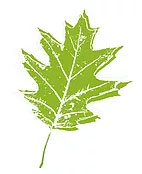Etymology
Lilium is Greek for lily; philadelphicum is from Latin, referring to ‘of Philadelphia.’
Native Habitat
Dry woods, prairies and meadows.
Garden Uses
This plant is fabulous for meadow and woodland gardens that are well-drained. Cross-pollination is essential for seed production, so at least several bulbs need to be planted in any patch. Rodent protection is advisable. Bulbs should be ordered from a reliable provider of regional variants - never transfer them from the wild.
Overview
Native through much of eastern and central North America, the perennial L. philadelphicum has adapted to both woodlands and meadows, as long as there is sun to part shade and the soil is well-drained. Its small, scaly bulb is longer than it is wide. It can easily go unnoticed when not in bloom. The eastern subspecies found in Maine is labeled var. philadelphicum; there are also western, southern and European variants. It is becoming less and less common due to over-picking of the beautiful flowers, over-harvesting of the edible bulb and over-grazing.
Leaves and Stems
Smooth, simple, hairless, green leaves are 2" - 4" long, 1/2" to 1" wide, and pointed at the tip. The eastern variant has whorled leaves from base to tip, with 4-11 leaves per whorl. Stems are green, smooth, non-branching, and rounded in cross-section, generally rising 1' to 3'.
Flowers
Typically 1-5 upright, cup-shaped blooms appear at the top of a stem, each 2-1/2" across, with 6 petal-like, spatula-shaped tepals which are most often deep orange to red, with a yellow base. Variants can include yellow tepals, and/or maroon stippling. The flower stems are so short it can appear that all flowers come from the same point of the stem tip. The blooms lack a detectable scent to humans. Six stamens surround the long style, and the anthers are erect and maroon.
Fruit/Seed
A 3-chambered pod 1" -5" long forms after the bloom fades. It turns brown, eventually splitting to release hundreds of wafer thin, disc-shaped seeds.
Wildlife Associates
Bulbs are very attractive to rodents, and flowers to browsers and grazers, including deer. Pollinators include hummingbirds and tiger swallow-tail butterflies.
Propagation
Propagation is easiest by division of the bulb in the autumn after seed release. Seed pods can be collected 6-8 weeks post bloom, when dried, but before they split; seeds must be kept moist but not wet. Seed i pots and overwinter outdoors.
Garden Location
Teaching Garden (see garden map)
Sources
Friends of the Wild Flower Garden Inc
Lady Bird Johnson Wildflower Center
Plant Profile by Kate O'Dell

